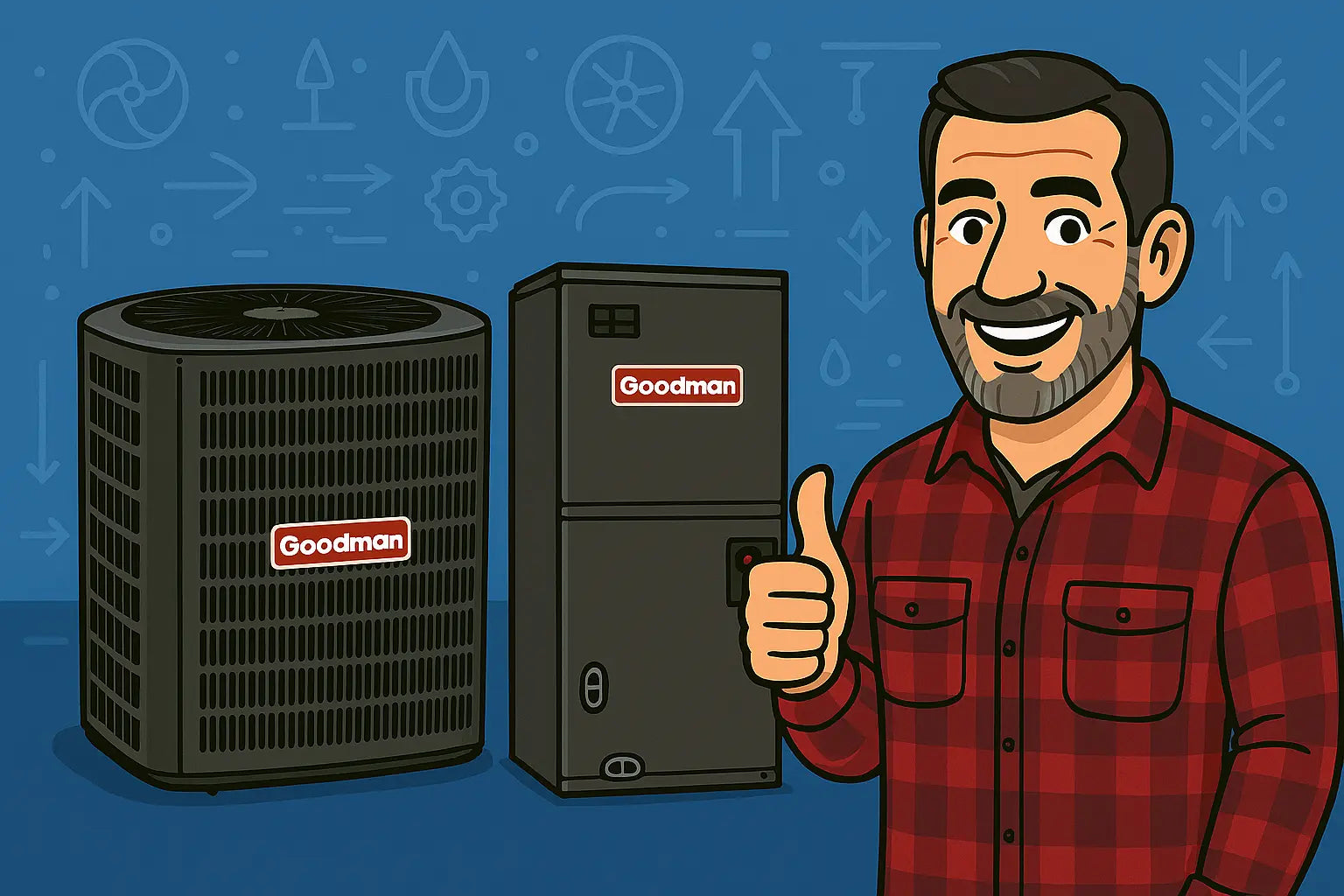Hello Friends!
If you’ve invested in a Goodman 5-Ton 14 SEER2 R-32 system—the GLXS4BA6010 condenser paired with the AMST60DU1300 air handler—you already know it’s a powerhouse of cooling efficiency. But even the best system requires proper care, especially when it comes to charging with R-32 refrigerant and routine servicing. Skip this part, and you risk reduced efficiency, higher energy bills, and costly repairs.
In this guide, I’m walking homeowners through the essential steps to keep your Goodman system operating at peak performance while staying safe and code-compliant.
Understanding R-32 Refrigerant
R-32 is a high-efficiency, low-global-warming refrigerant that many modern HVAC systems—including Goodman—use. It’s environmentally friendlier than R-410A but requires careful handling.
-
Why R-32 matters: It has a lower global warming potential (GWP) and offers excellent cooling performance.
-
Safety first: Always use proper protective gear and tools. Handling refrigerant improperly can result in frostbite or personal injury.
For detailed safety guidelines, check out the EPA’s Section 608 refrigerant rules.
When to Charge Your System
Your Goodman system should only be charged when necessary. Signs that a charge might be needed include:
-
Reduced cooling performance or uneven temperatures
-
Ice formation on coils
-
Increased energy consumption
Keep in mind, overcharging can be just as harmful as undercharging, causing high pressure that damages the compressor. For reference, the manufacturer’s Goodman service manuals provides exact refrigerant amounts for your system.
Tools and Safety Tips
Before charging your system, gather the right tools:
-
Refrigerant manifold gauge set
-
Recovery cylinder and vacuum pump
-
Leak detector
-
Personal protective equipment (gloves, goggles)
Always follow the Occupational Safety and Health Administration (OSHA) guidelines for handling refrigerants. Remember, R-32 is mildly flammable, so no open flames or sparks around the system.
Step-by-Step Charging Process
-
Turn off the system and disconnect power.
-
Attach your gauges to the service ports on the condenser.
-
Evacuate the system if opening lines or making repairs. A vacuum pump removes air and moisture.
-
Introduce refrigerant slowly, following manufacturer specifications for charge weight.
-
Monitor pressures and temperatures while the system runs, adjusting as needed.
-
Check for leaks with a leak detector or soap solution.
For a detailed technical breakdown, HVAC Know It All has a step-by-step refrigerant charging guide for similar R-32 systems.
Routine Service Tasks
Charging isn’t the only thing that keeps your Goodman system healthy. Regular service prevents major issues:
-
Filter changes: Every 1–3 months.
-
Condenser coil cleaning: At least once per season.
-
Check blower motor and fan: Ensure proper operation.
-
Inspect electrical connections: Tighten any loose terminals.
-
Drain line cleaning: Prevents water buildup and mold growth.
According to the Air Conditioning Contractors of America (ACCA), annual professional maintenance significantly reduces unexpected breakdowns and extends system life.
Common Mistakes to Avoid
-
Overcharging or undercharging refrigerant
-
Skipping vacuum evacuation
-
Ignoring leak detection
-
Using incorrect tools or gauges
-
DIY electrical work without proper training
Following proper procedures ensures your 5-ton Goodman system operates efficiently and safely.
Professional Help vs. DIY
While some service tasks like filter changes can be DIY, charging refrigerant should always be performed by a certified HVAC technician. Mishandling R-32 can result in injury or void your warranty. For professional guidance and equipment specs, consult your system’s Goodman product page.
Final Thoughts
Keeping your Goodman 5-Ton 14 SEER2 R-32 system in top shape requires proper charging, routine service, and attention to safety. Following the steps above—while using professional support when necessary—will help your system maintain peak efficiency and reliability for years.
Whether you’re a hands-on homeowner or prefer leaving the technical tasks to a licensed technician, taking refrigerant charging and servicing seriously ensures consistent cooling, lower energy bills, and fewer costly repairs.
For more details on specifications or to explore this powerful system, check out the Goodman 5-Ton 14 SEER2 R-32 system.
Need to know when it's time to call a pro for this system? Visit: Avoid Costly Mistakes.
Until next time,
- Mike, your go-to HVAC guide!







